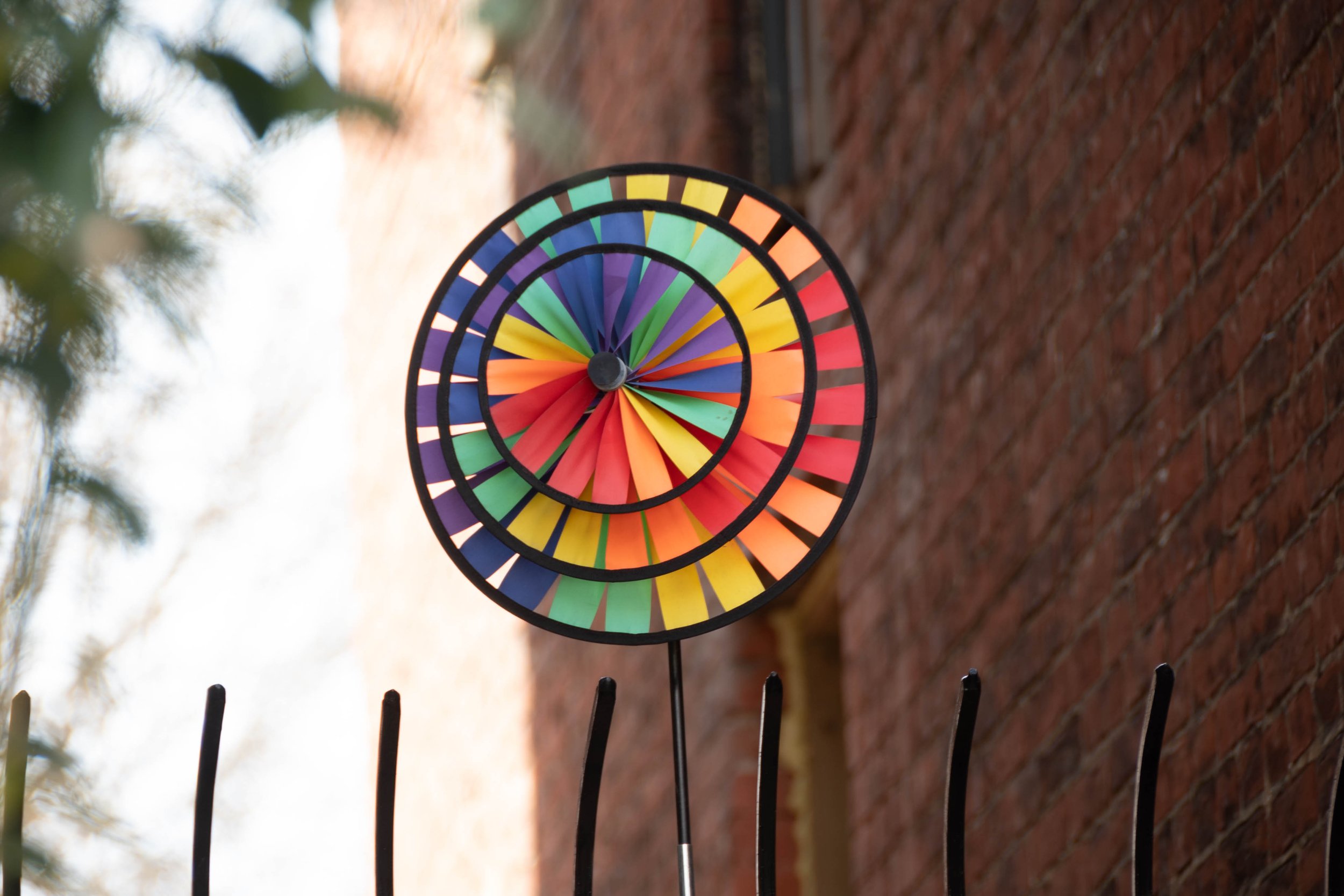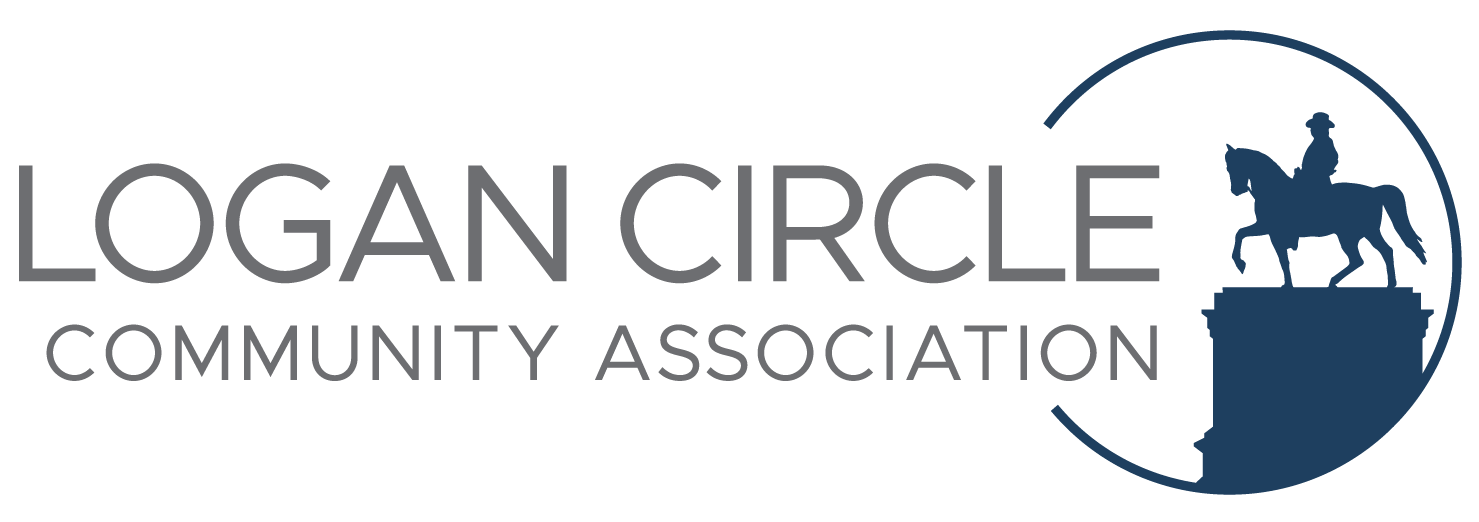
LGBTQ ORAL HISTORIES
LCCA, in collaboration with the Washington Blade and the Rainbow History Project in 2022 collected oral histories of LGBTQ-identified people who have lived, played and recreated in Logan Circle for ten or more years. Learn more about their stories by reading the abstracts and/or full transcriptions and listen to the sound files of each interview.
LCCA LGBTQ ORAL HISTORIES ABSTRACTS
ED BAILEY
Interviewed by Lynne Brown, publisher of The Washington Blade, in June of 2022
Ed Bailey, who grew up in DC, moved to an apartment in Logan Circle in 1994 and bought a home in the neighborhood in 1997 where he has lived ever since. He reminisced about the changes since 1994. Ed wouldn’t frequent the Circle, which seemed unsafe to him at that time. Friends wouldn’t visit him in the 1990’s; there were no amenities. But there was a migration of the gay identity from Dupont Circle, new stores and restaurants and, in 2002, the opening of the gay bar Halo. “…I mean, it's been a very rewarding place to be. I lived for a number of years on Capitol Hill and felt the same kind of sense of community. It felt not as forward thinking. It felt just kind of like comfortable place to be, but kind of an established, comfortable. "This is what we are, and we don't intend to be anything other than this." Logan Circle, it feels like it's willing to kind of grow and expand with the world, and as kind of modernized, and become this, and new. That seems to fit me better, so.”
MAURICE DORSEY
Interviewed by Lynne Brown, publisher of The Washington Blade, on June 15, 2022
Maurice Dorsey is a thirty-year resident of Logan Circle, an author, a former ANC commissioner, and former employee of the University of the District of Columbia and the USDA where, among other things, he helped LGBT employees become successful in the workplace. He related stories of two long-term relationships and how they quietly lived their lives – going to the Kennedy Center, sharing newspapers at coffee shops.
Maurice recalled that in the 1990’s there was a perceived divide between 14th and 15th Streets, NW given drugs, crime and prostitution along 14th Street. Annie’s on 17 th Street NW was a safe restaurant for gays to dine out. Friends and Halo were bars of choice. Reflecting on the changes he has seen, Maurice said, “Logan Circle was not the Logan Circle we know now…If you walked out my front door and turned right to go to 15th Street, you would have thought you were on the Champs-Elysées with the beautiful trees and everything, the cars zooming up and down the street. But if you turned left…14th Street was just dreadful.”
MARC FALLOW AND LARRY ROSEN
Interviewed by Lynne Brown, publisher of The Washington Blade, on June 16, 2022
Marc Fallow moved to Logan Circle in 1980 and Larry Rosen in 1981, and they lived in a group house at 19 Logan Circle after answering ads on a bulletin board at Lambda Rising and in The Washington Blade. Marc was drawn to neighborhood by articles in The Washington Post about the area’s resurgence. Larry, moving from the Maryland suburbs, was seeking a place more suited to “a youngish queer person.” They capture that time with anecdotes about a neighborhood in flux; limited dining, drinking and shopping in Logan Circle and the trek to other gay hot spots in the city; gay musical groups; and gay activism. To quote Marc, “I am glad that we were the age we were when we were, where we were, at Logan Circle.”
JOHN GUGGENMOS
Interviewed by Lynne Brown, publisher of The Washington Blade, on June 17, 2022
John Guggenmos, a transplant from Wyoming, moved to Logan Circle in 1989 to attend college. He settled in a group house at Logan Circle for the cheap rent. “But it was beyond the magic line of 15th Street where, even at that time, that was not an acceptable part to walk beyond. It was a very, very different neighborhood back then. Very different. Thank God cabs were zoned, because you could come anywhere, and then for $2,80 get home within in the one zone.” John, who served on the ANC and its committees and has owned restaurants and bars in Logan Circle, covers a number of topics in his interview: the gay movement westward from Dupont Circle, the evolution of the Pride parade, real estate trends, public safety and even dog-walking in Logan Circle.
SAK POLLERT
Interviewed by Jeffrey Donahoe, The Rainbow History Project, on June 6, 2022
Sak Pollert, owner of Rice, is a 31-year resident of DC having emigrated from Thailand in 1991 and connected to the gay community through Asian and Friends. “Having the niche with a place to connect to meet people, that made me feel safe. And that’s what that group was about.” He lived in Dupont Circle and considered 16th Street to be the boundary between safe and unsafe streets. Introduced to Studio Theater by a friend, he realized the potential of Logan Circle but nonetheless started his first business “Simply Home” on 18th Street, NW, a store often confused with “Home Rule” on 14th Street, NW. Sak got to know the close community of merchants on 14th Street – Home Rule, Go Mama Go, Vastu, Muleh, Pulp and others. He opened Rice in 2003. Sak’s interview focuses on the evolution of businesses and restaurants on 14th Street, mourning the loss of the business that opened in the 1990’s. Sak observed, “The word ‘gay neighborhood’ got lost into this modern time… because of technology and apps…. In the past, we felt more of a neighborhood, a gay place, a gay bar, and gay life is because the fabric of society is different than now.” He added, “So that’s how I still feel, ‘Okay, this is still a gay neighborhood, but is there any specific gay business or this or that like in the past? No.’ “
NICOLAS SHI
Interviewed by Lynne Brown, publisher of The Washington Blade, on June 22, 2022
Nicolas Shi immigrated to the United States from El Salvador for college and moved to Washington, DC for work in 1986. He and his husband bought a house in Logan Circle in 1988 and continue to live there. Nicolas, an acclaimed artist, works out of his studio in the lower level of their house, and he was selected as an artist for Let’s Paint the Streets. (See his work on the utility box at the southwest corner of 15th and P Streets.) He was instrumental in forming MidCity Artists with several other Logan Circle artists who organized open studios. There were a lot of artists around 14th Street: five artists created studios in the basement of a building next to the Crew Club; another studio was in a house next to the Garden District; and an artist had a framing shop on the second floor of Bar Pilar. Nicolas describes social life in Logan Circle. He and his partner would host parties for Asians and Friends and at some point, their party would move to gay bars such as Lost & Found. Afraid of crime, some friends wouldn’t come to parties in Logan Circle. Nicolas notes that people didn’t want to go east of 15th Street, and he refers to “walking blocks,” those that felt safe, and “running blocks,” blocks to move through quickly.
JEFF TRAVERS
Interviewed by Lynne Brown, publisher of The Washington Blade, in June of 2022
Right out of Georgetown University in 1991, Jeff Travers was hired by Jim Graham to work at Whitman Walker Clinic. He recalls Whitman Walker programs such as supportive housing for people with AIDS. “People would leave us their houses… or I think we bought a lot of property back in the day when things were pretty cheap. We had a combination of supportive housing, independent living. We had one hospice type house, and they were not small operations because you were investing in staff resources to run these places.” Jeff recounts serving as an ANC commissioner and dealing with difficult conflicts of a changing neighborhood, such as “NIMBY” opposition to plans for a new facility for N Street Village. Jeff bought a condominium in one of the mansions on Vermont Avenue in 1992 for $92,000 and later moved to a larger apartment down the street with his partner. Jeff left for Chevy Chase DC in 1998 in search of a larger home in a walkable neighborhood.
